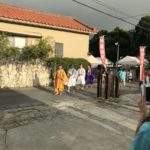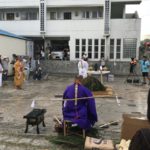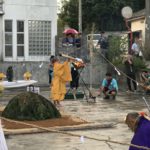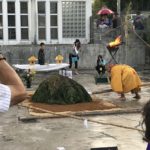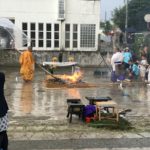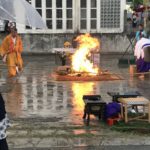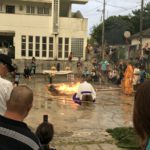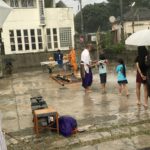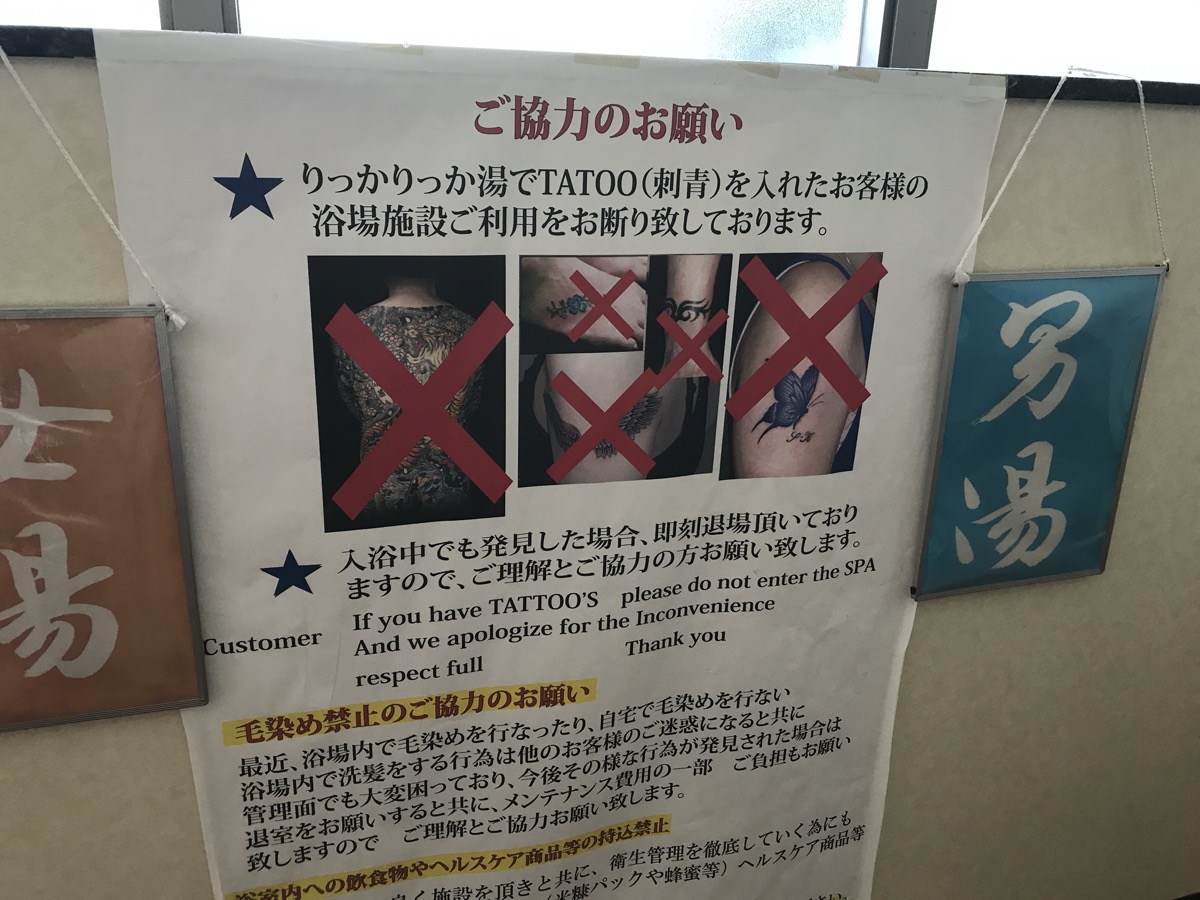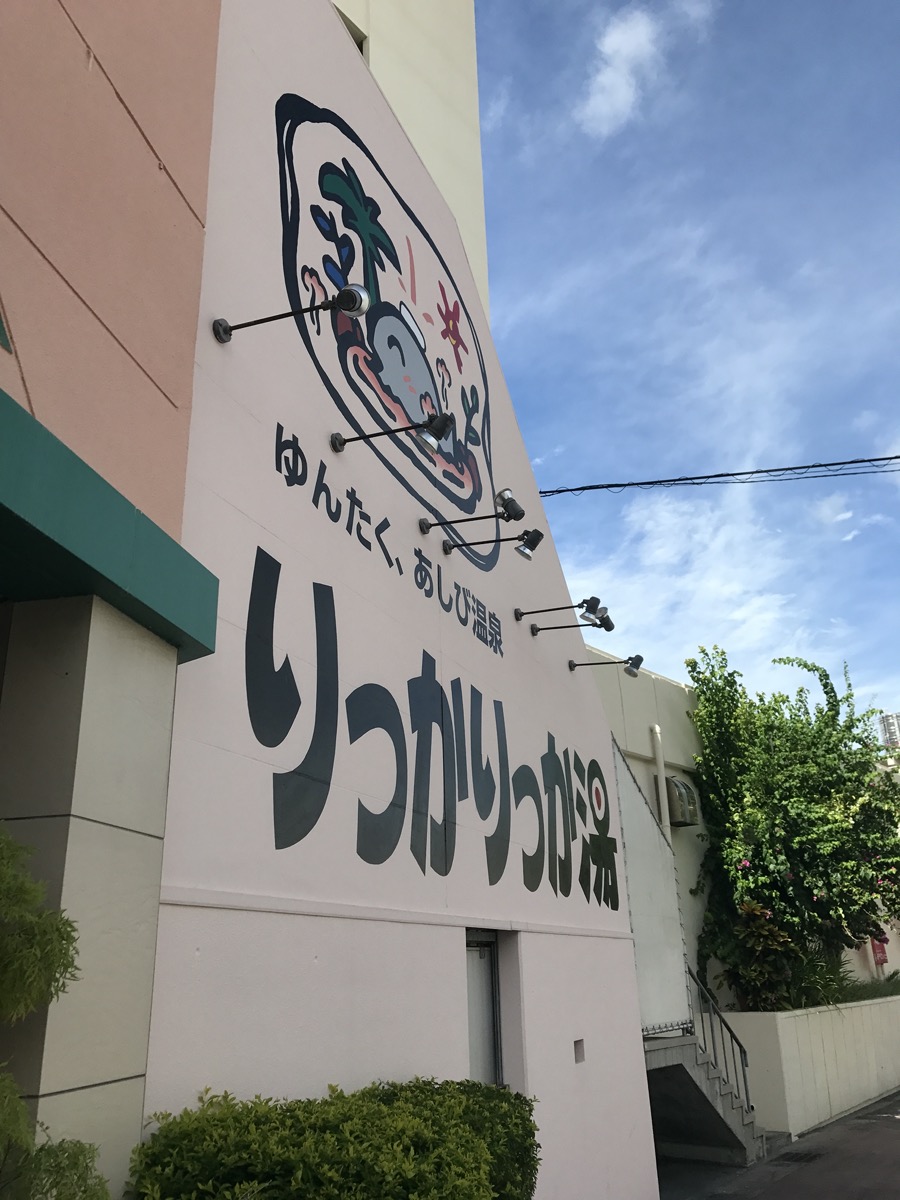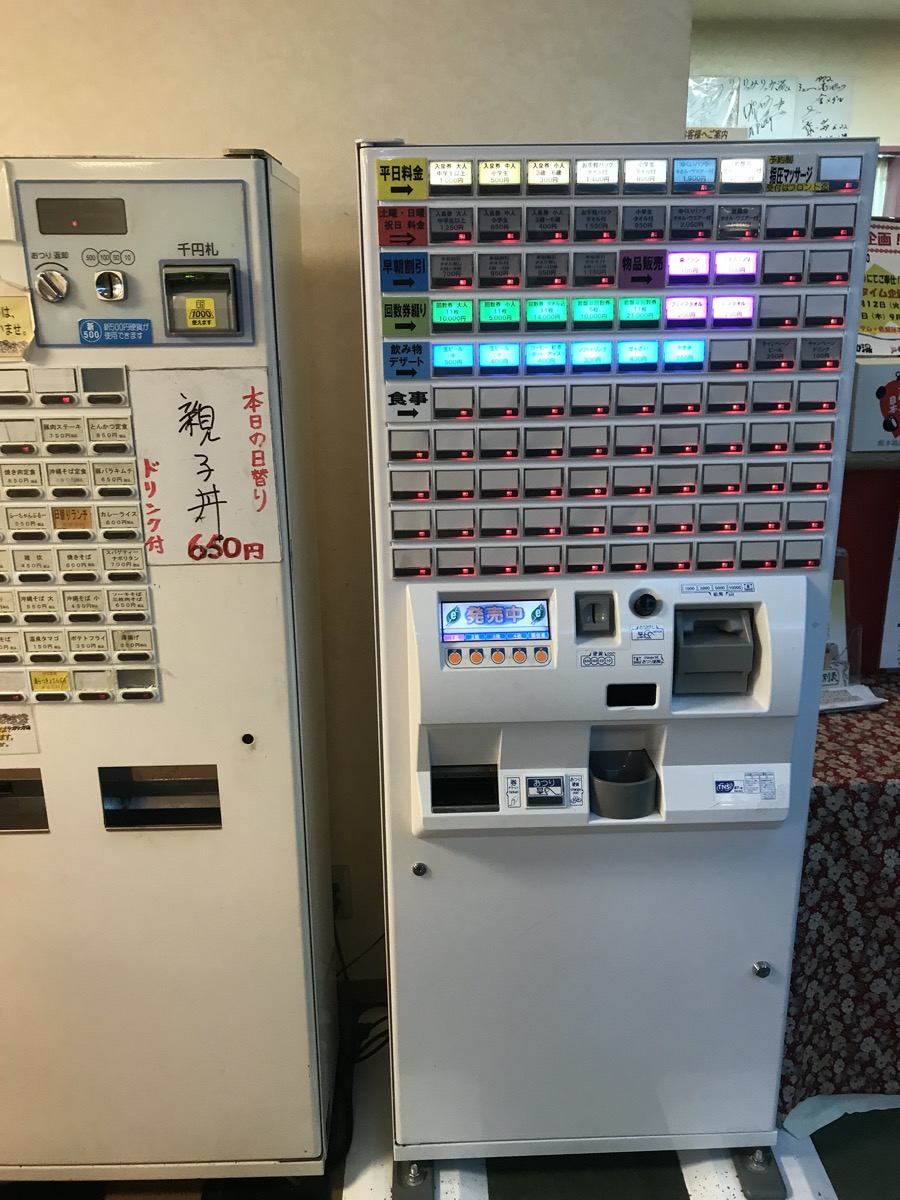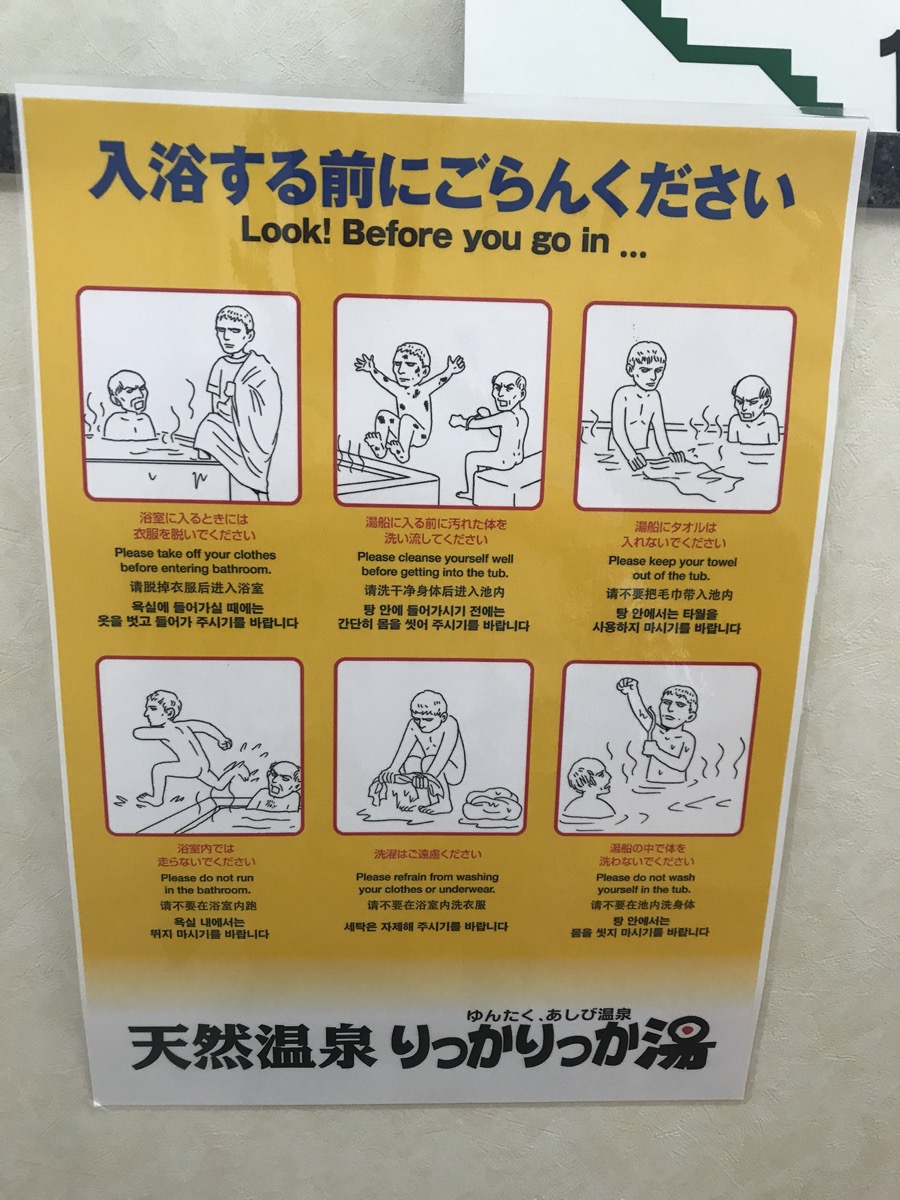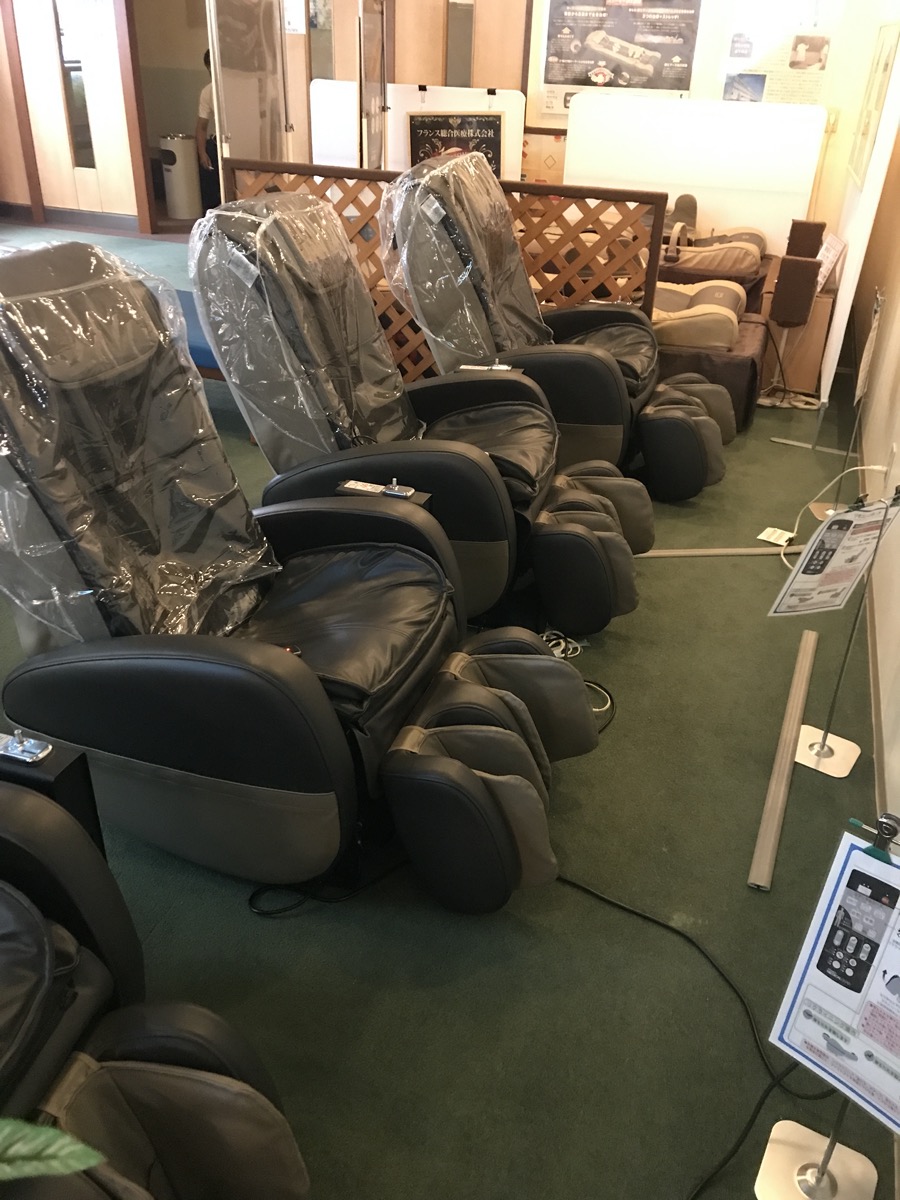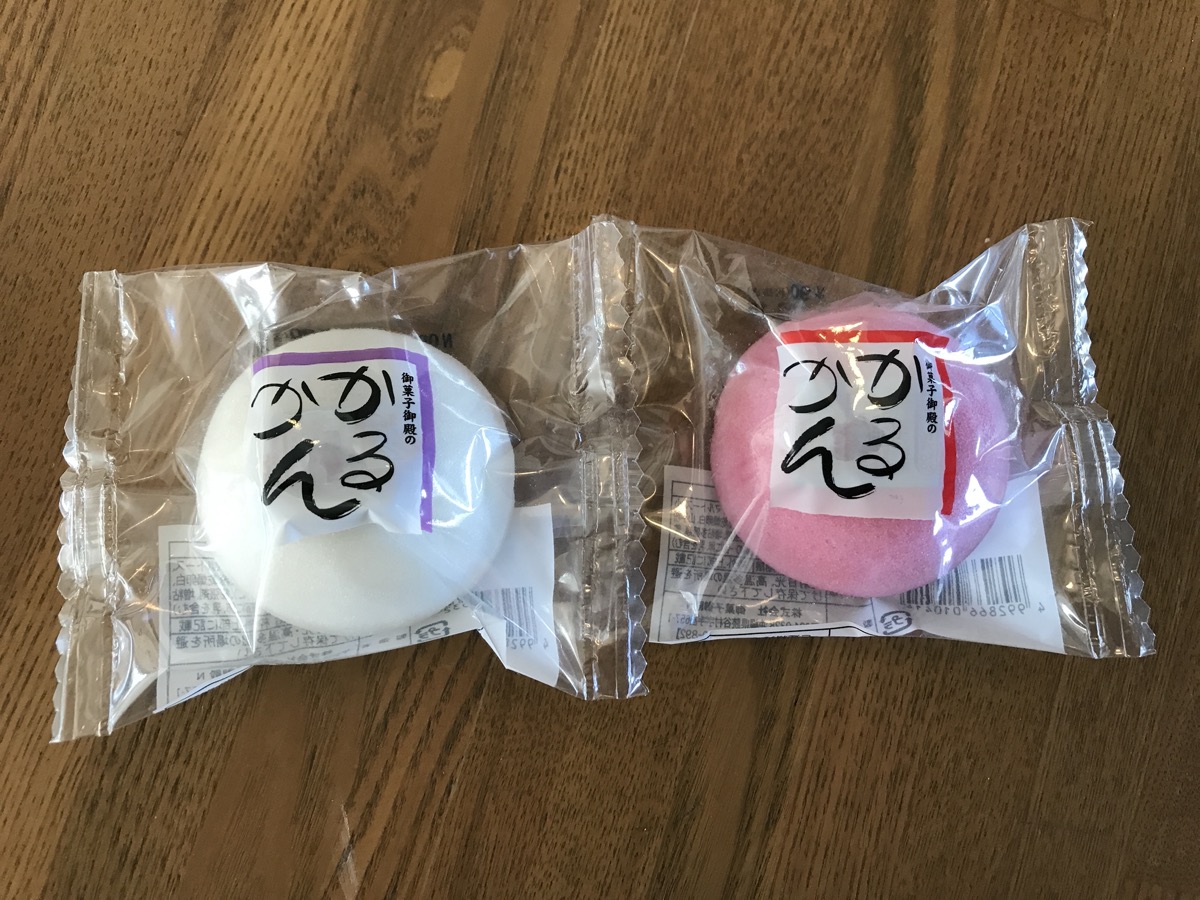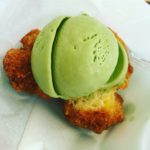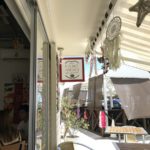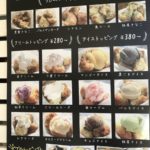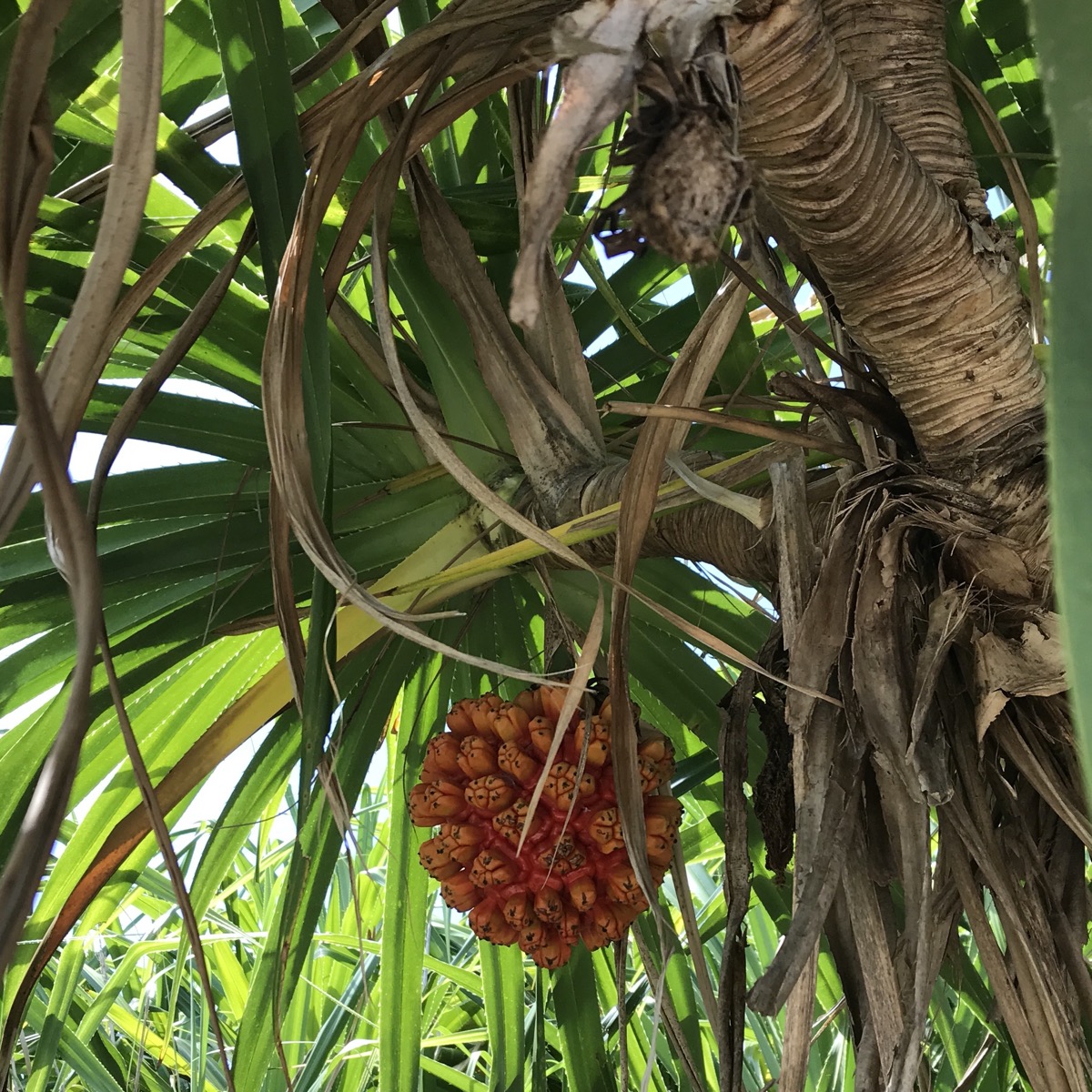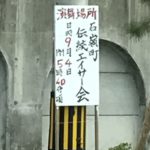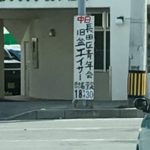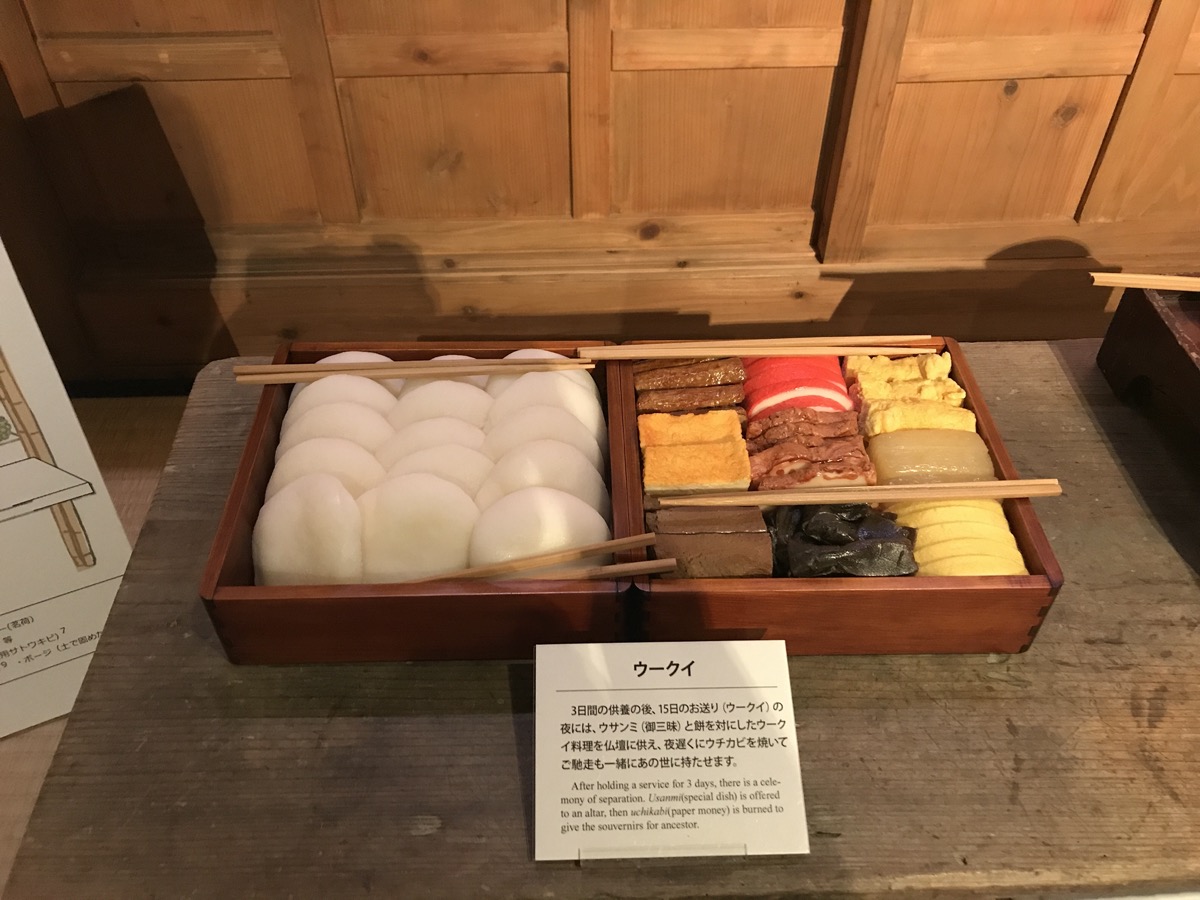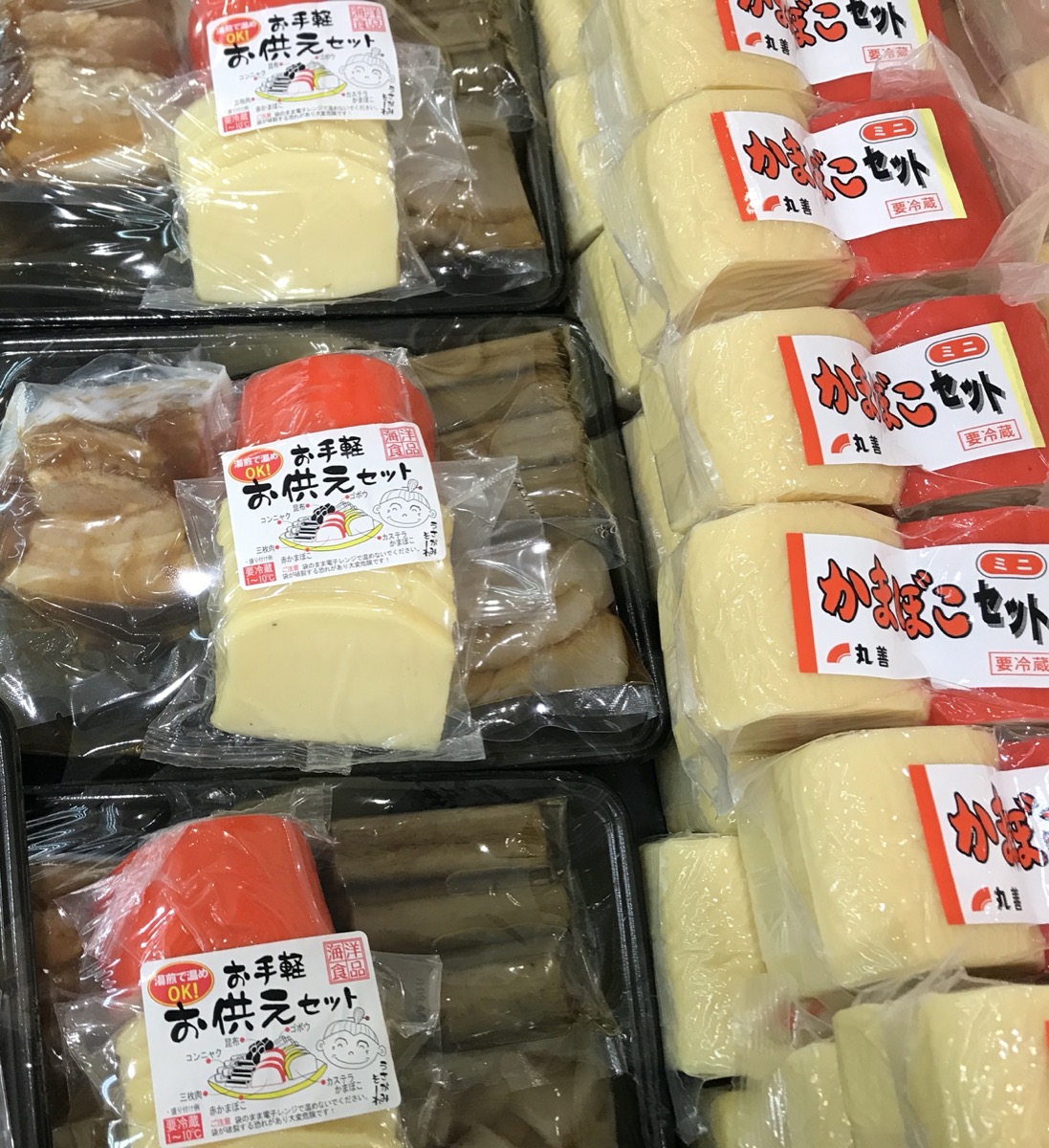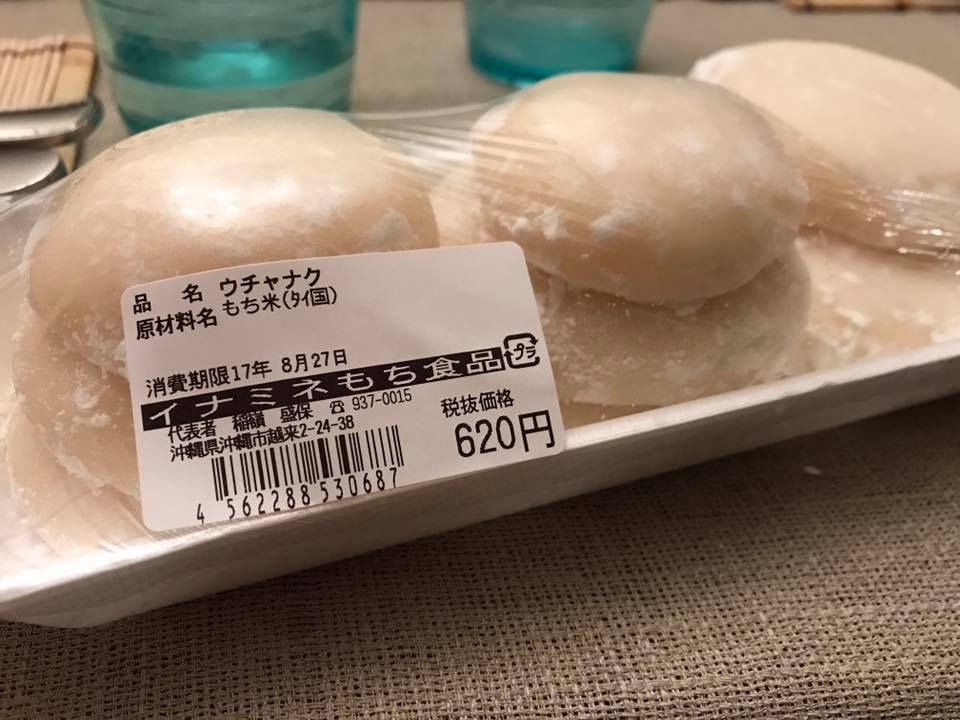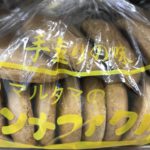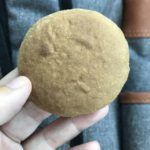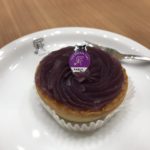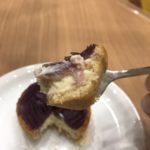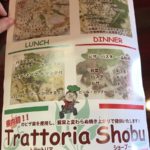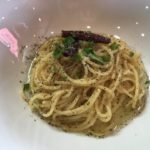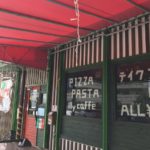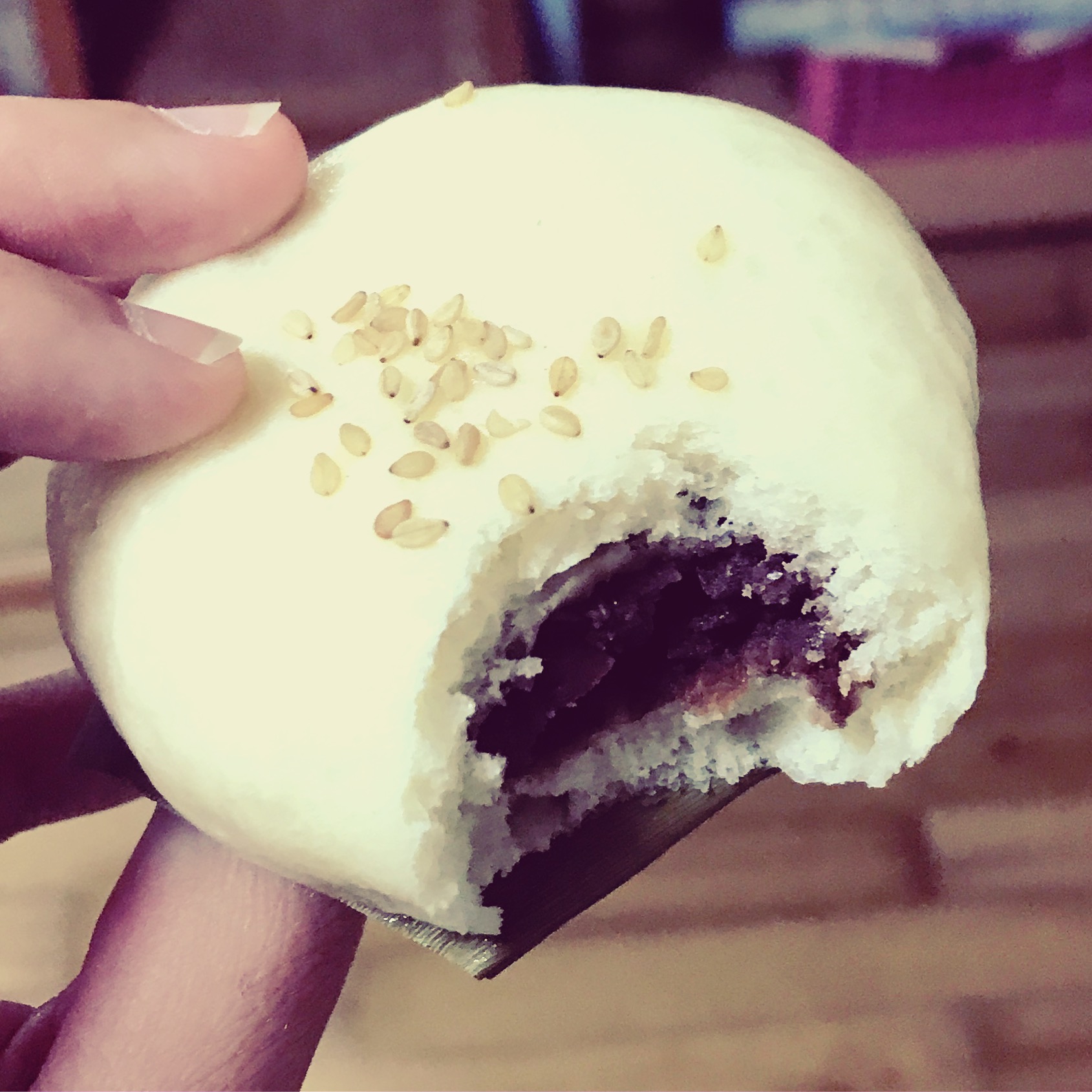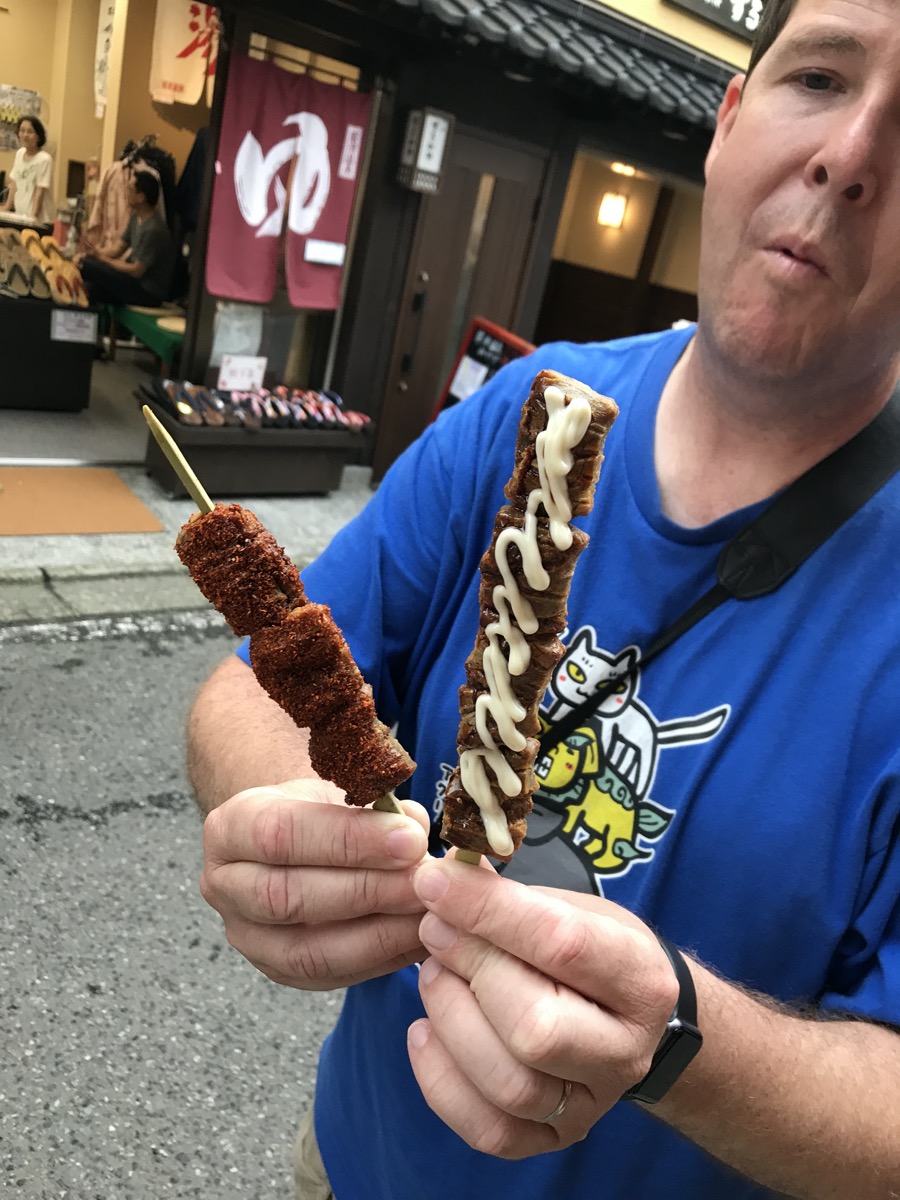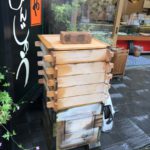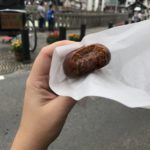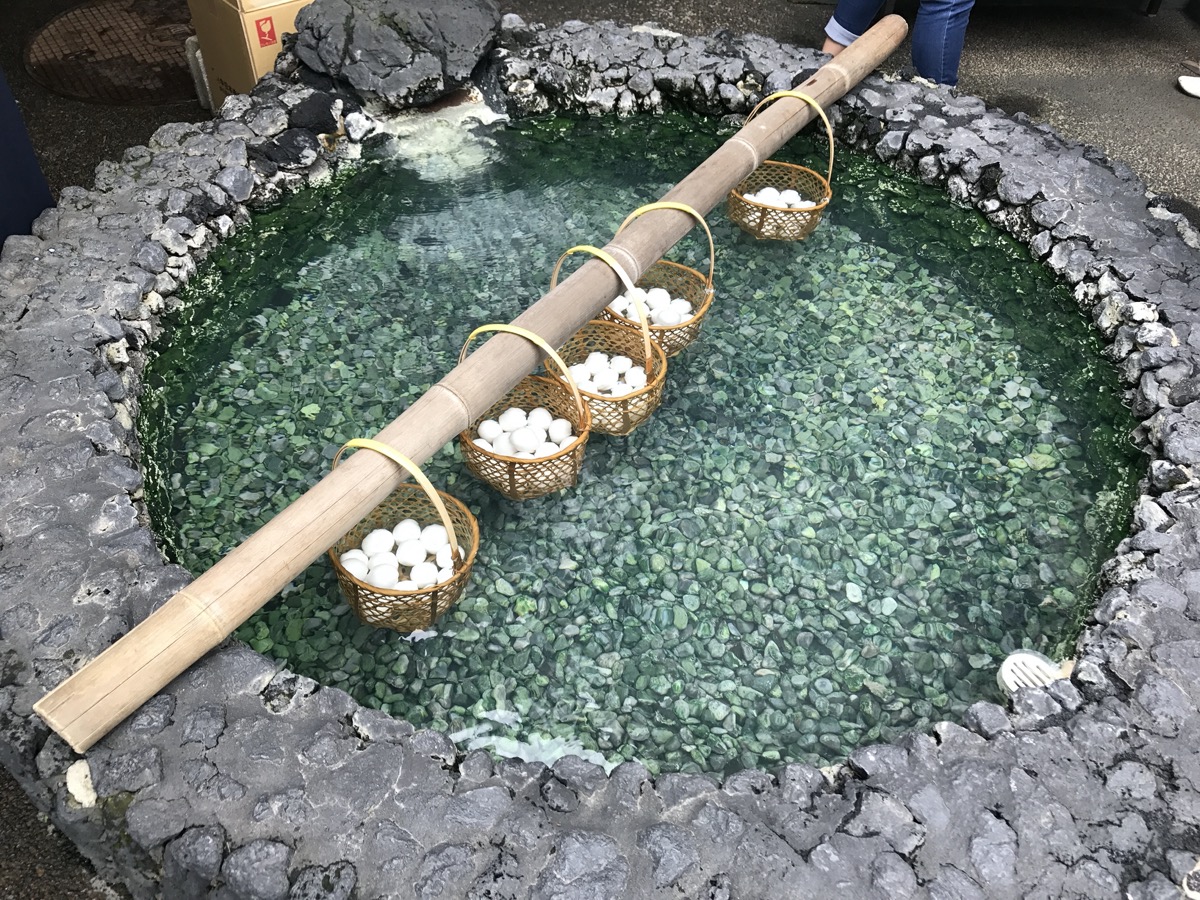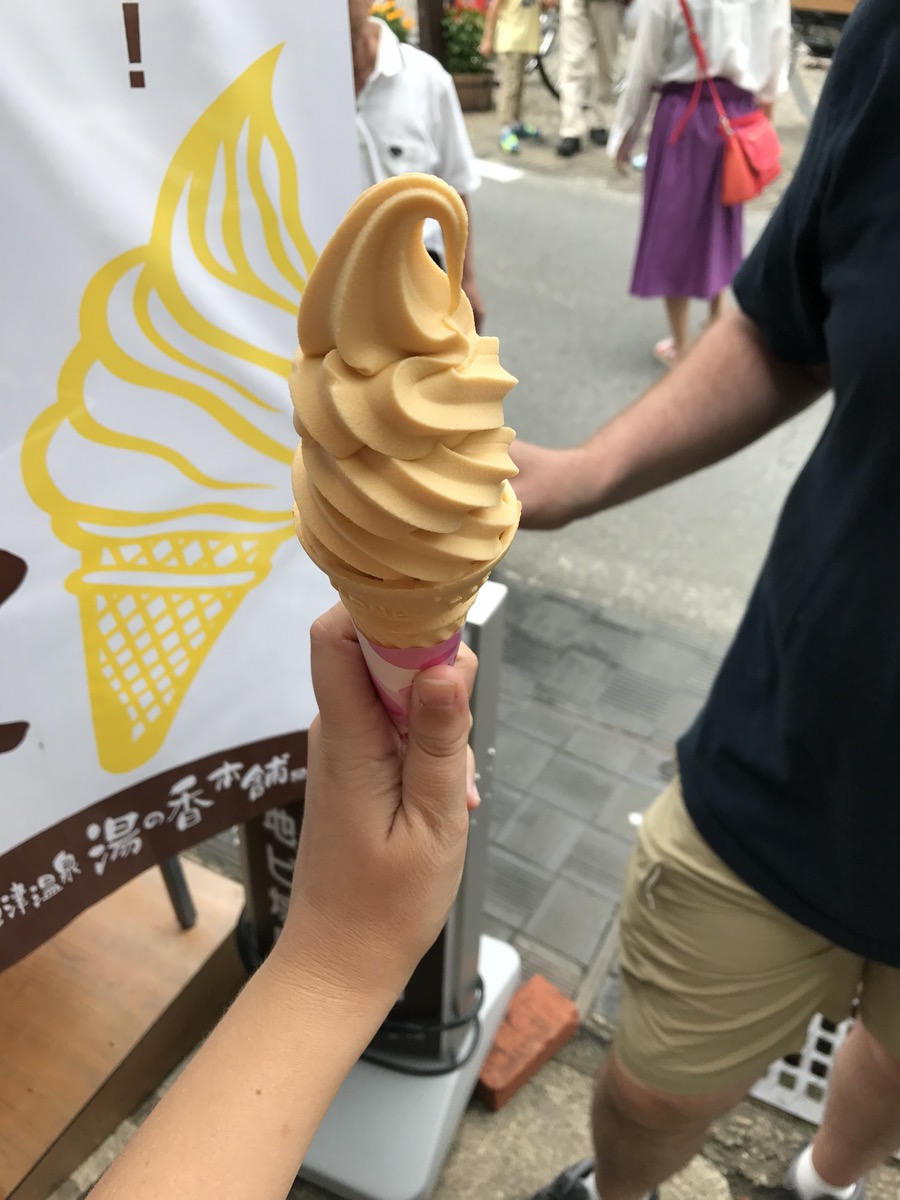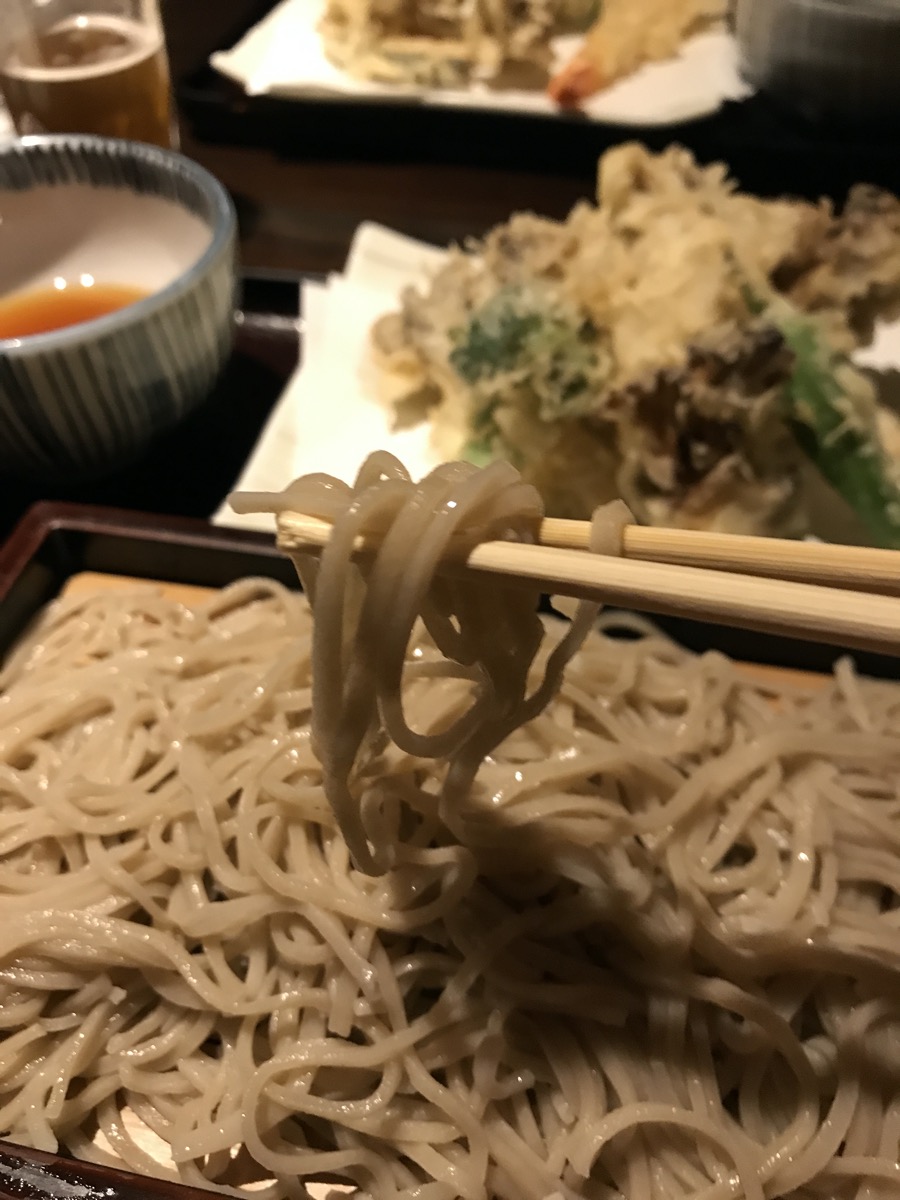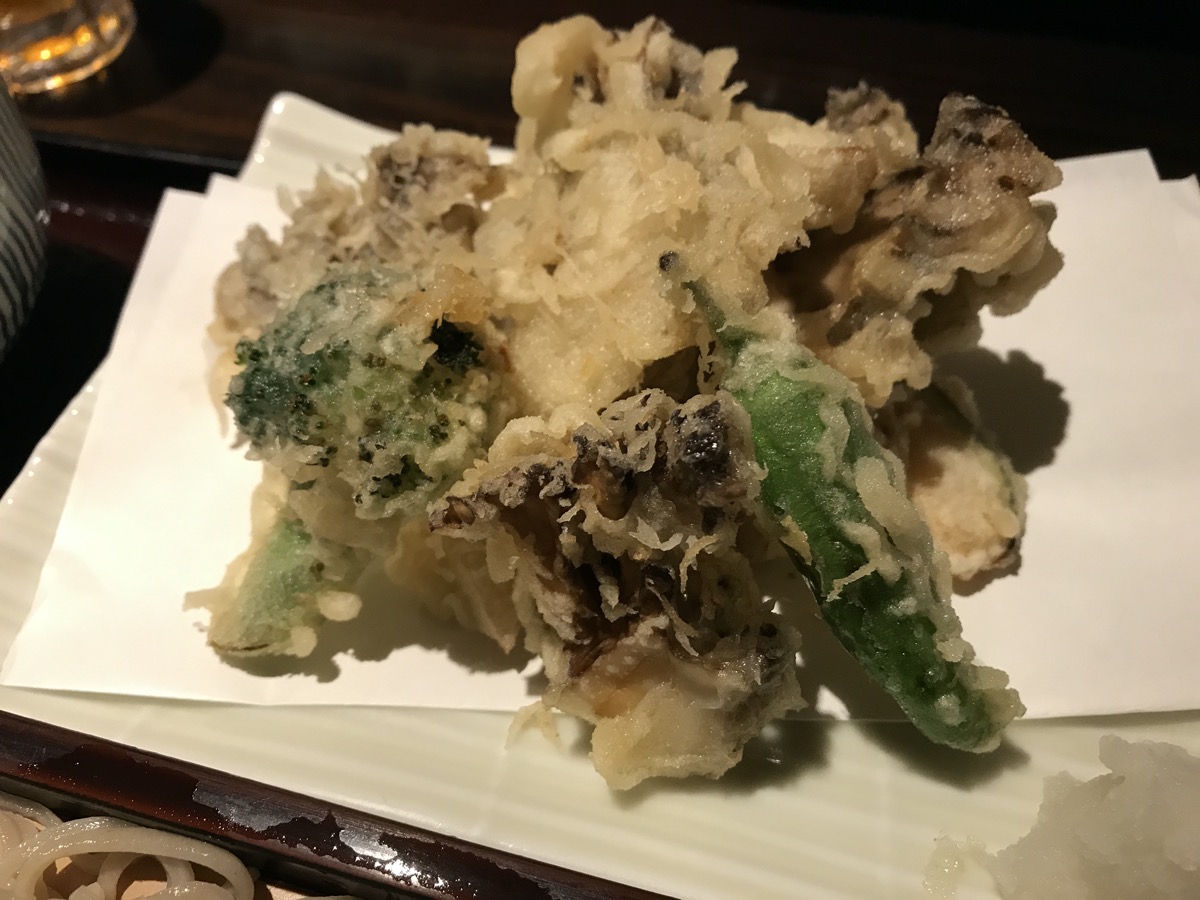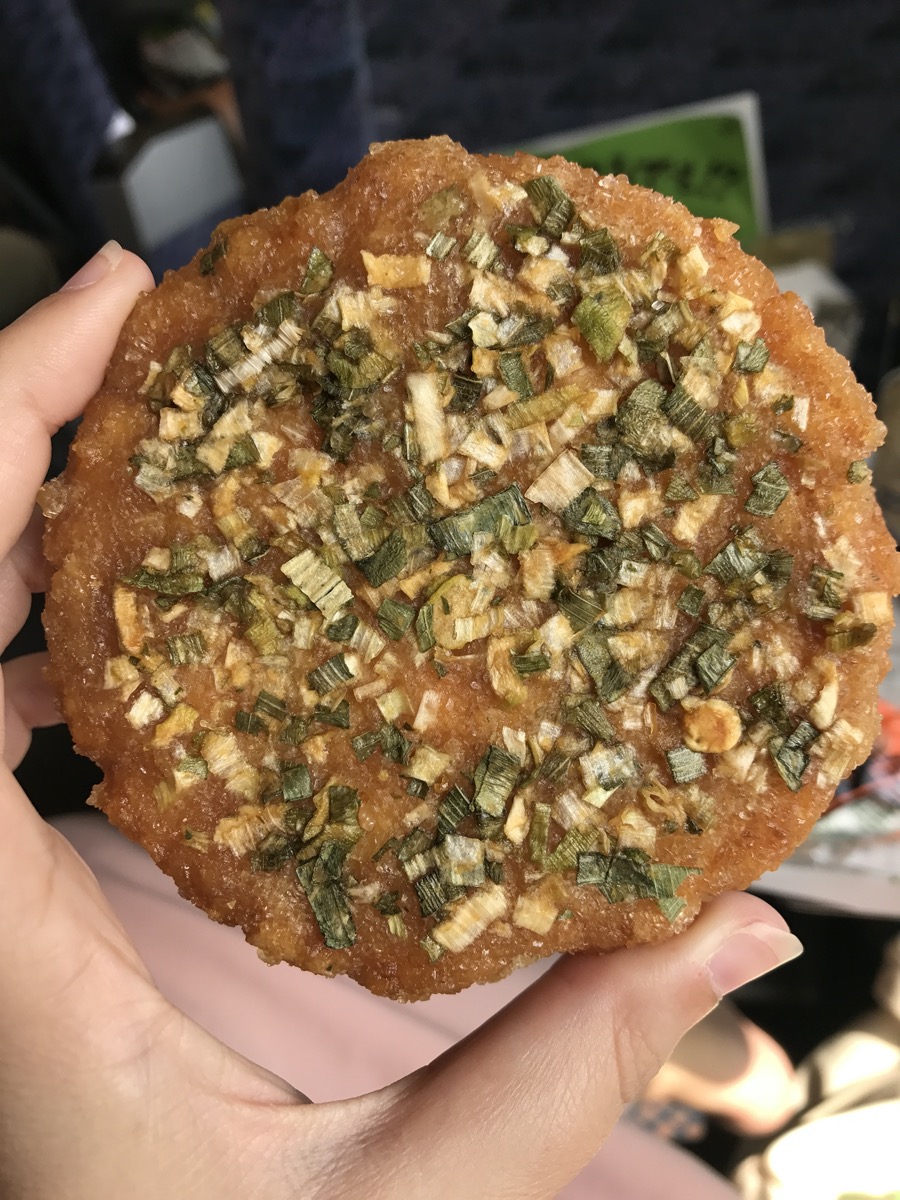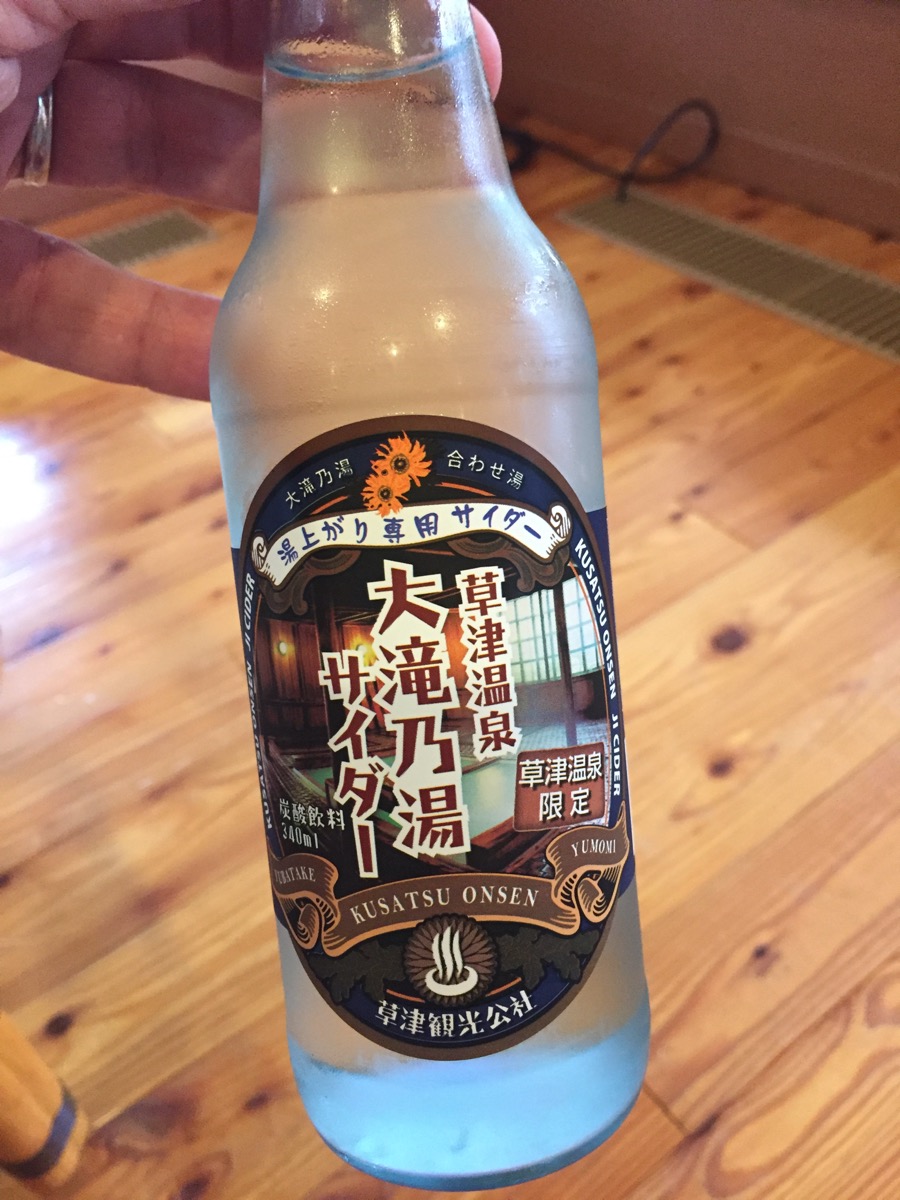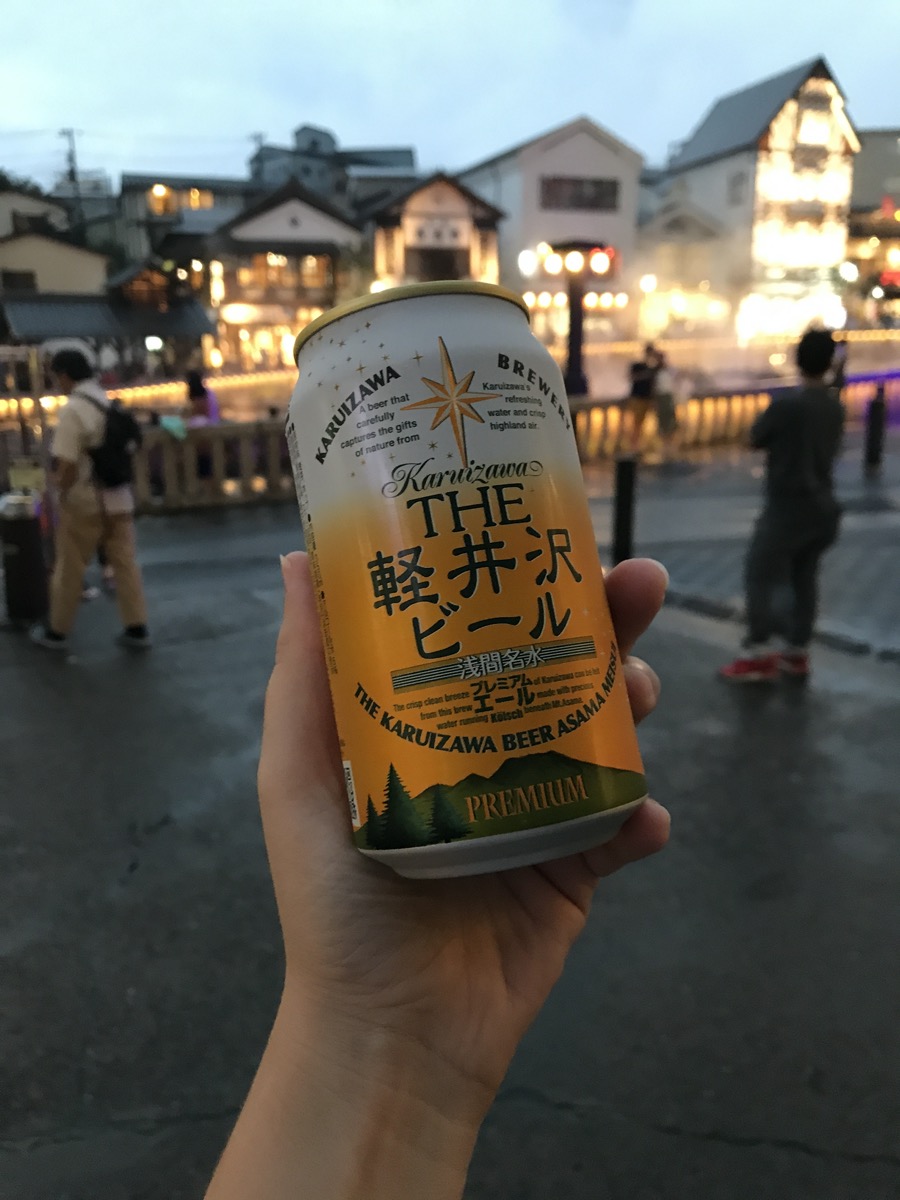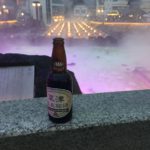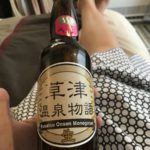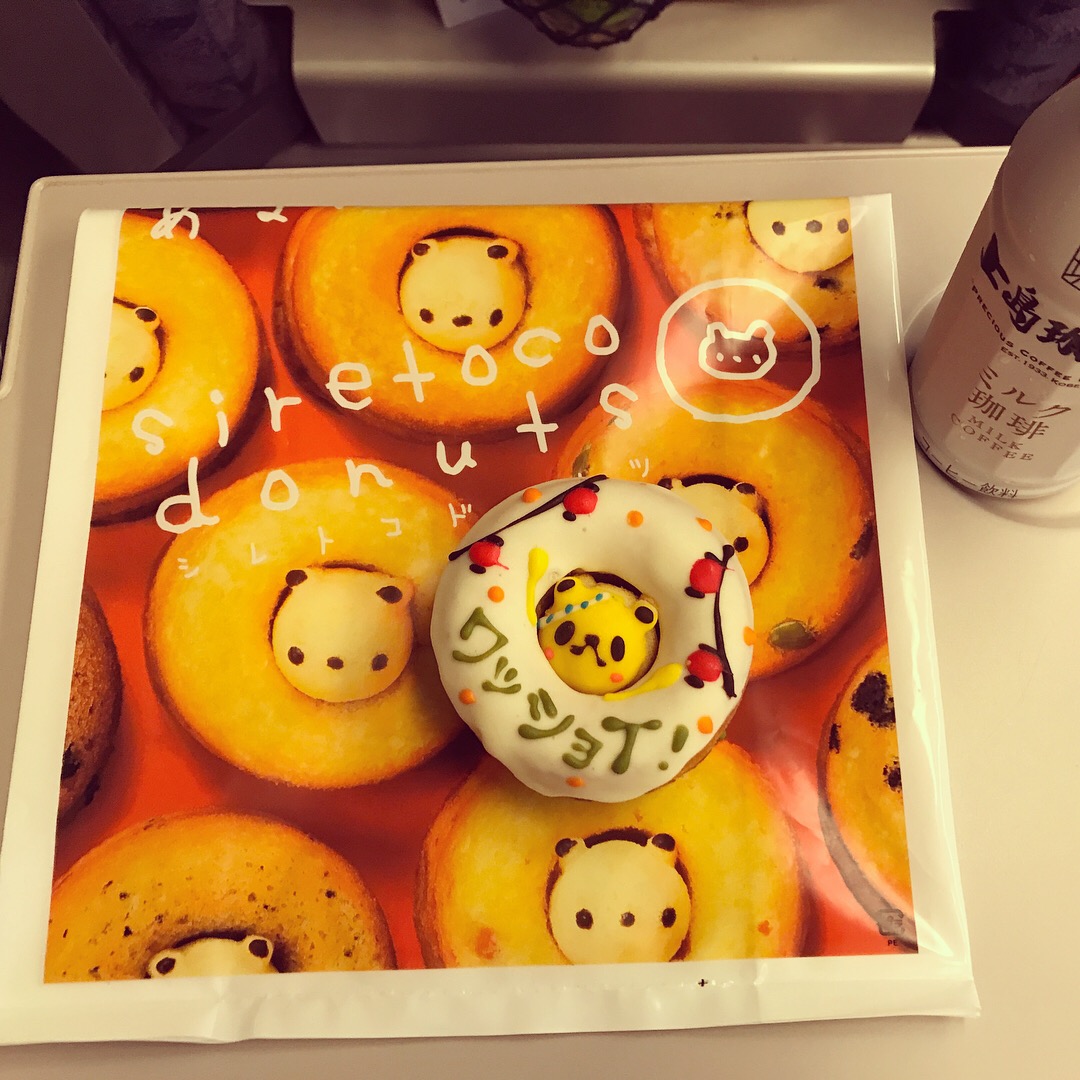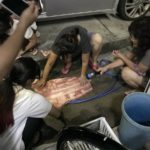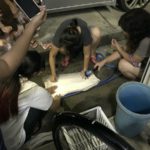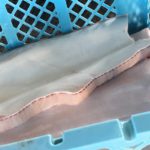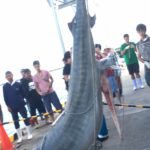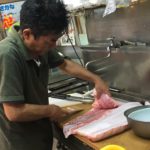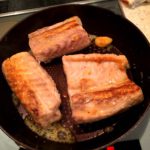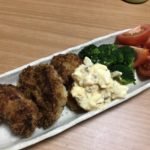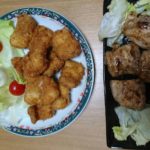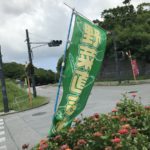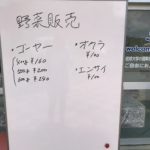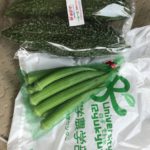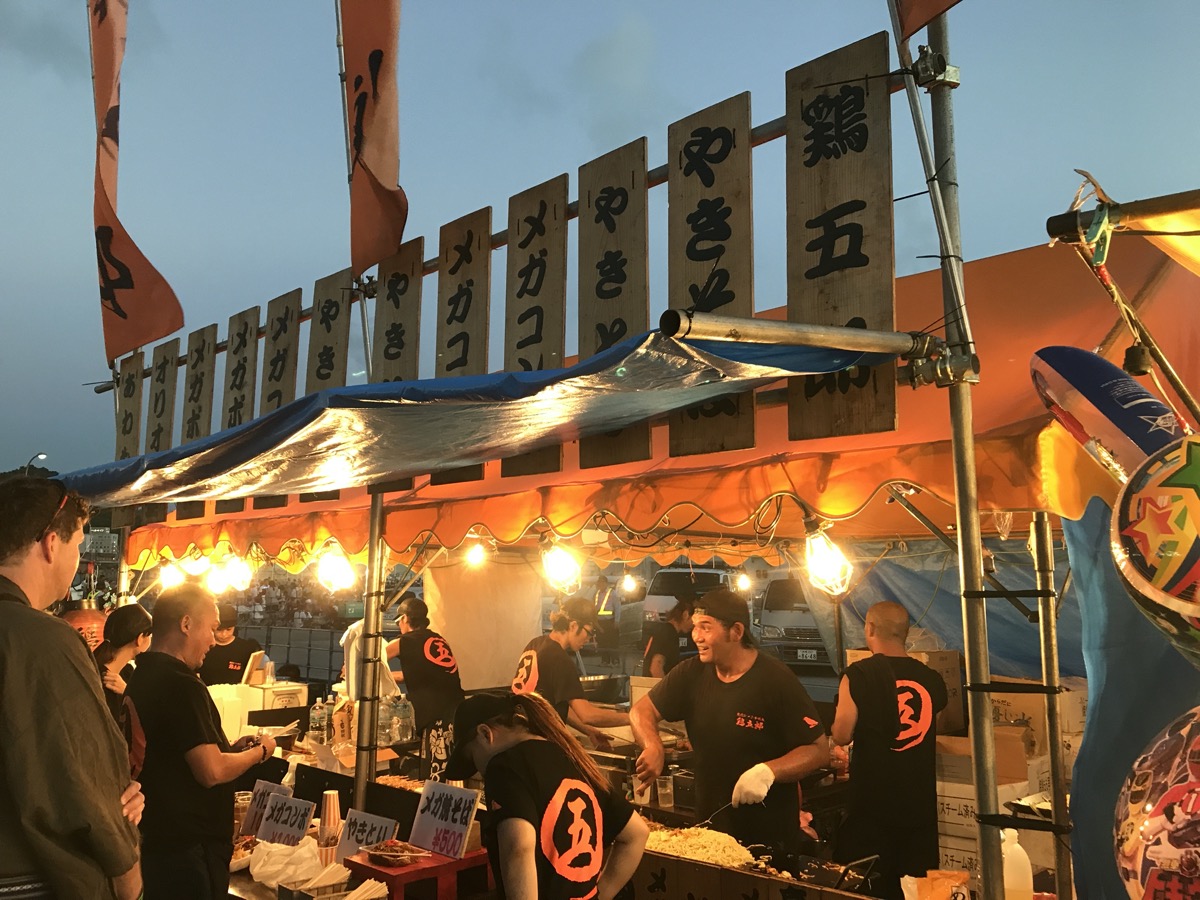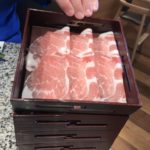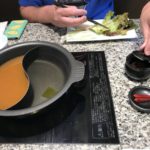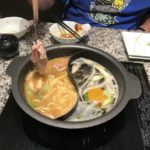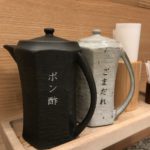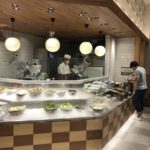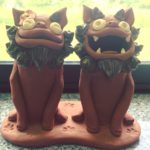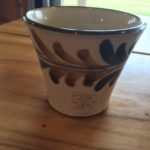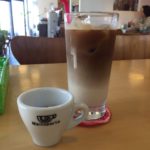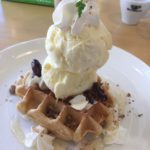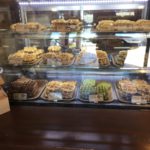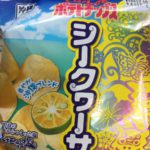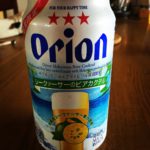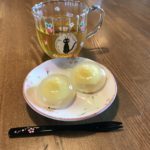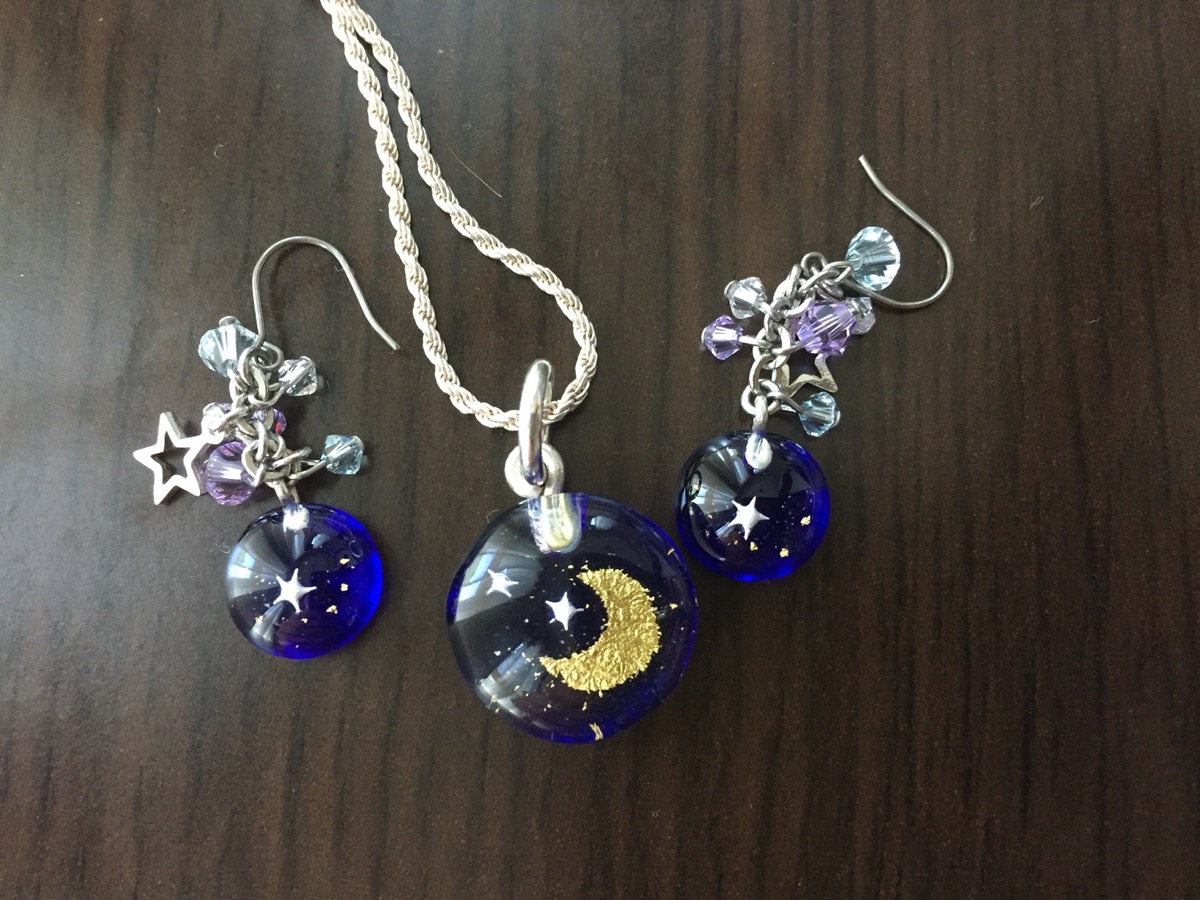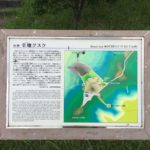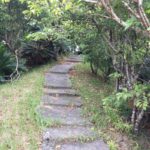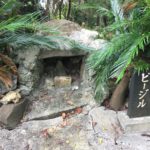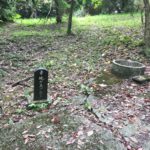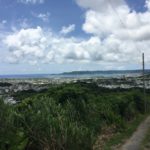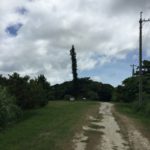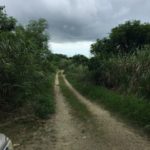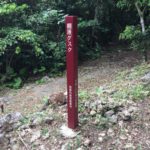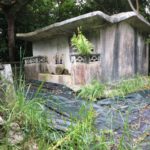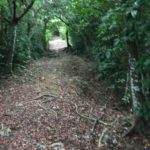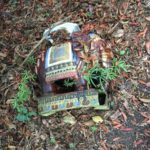Kusatsu onsen 草津温泉 in Gunma prefecture 群馬県 is one of the three famous ancient hot springs in Japan (called 三名泉 “sanmeisen,” in addition to Arima Onsen in Hyogo and Gero onsen in Gifu). These hot springs are renown for healing properties, supposedly to cure a wide array of ailments.
Because I am an onsen junkie, I decided to head to Kusatsu onsen for the long weekend (Mountain Day public holiday, 山の日). In retrospect, this was not the most brilliant idea as: a) Japanese schools are on summer vacation, b) Japanese holiday weekend, and c) Obon in parts of the mainland began the same weekend. So… travel was busy. Very, very busy. I don’t really recommend traveling in Japan during this time if you can avoid it.
Anyway I did make it to my destination with almost no issues, and ended up having a fantastic time even though it was a little crowded everywhere.
We flew from Okinawa into Haneda airport on Friday afternoon; we stayed the night in Hamamatsu-cho 浜松町 with plans to leave for Kusatsu early the next morning. In Hamamatsu-cho, we returned to the restaurant we discovered last time, DevilCraft (this time with reservations!) and enjoyed Chicago-style pizza with craft brews.
There are a few ways to make your way to Kusatsu onsen; we chose to take the limited express from Ueno Station to Naganohara- kusatsuguchi station (~2.5 hours) followed by the JR bus to Kusatsu onsen (~20 minutes). Since we also got a reserved seat on the green car (it has more room), the total travel cost was about 6500yen one-way, from Hamamatsu-cho all the way to Kusatsu onsen. If you are willing to forgo the green car, your costs will probably be about 4500yen one-way.
On Saturday morning we hustled from the hotel to the train station for the 9am train. We arrived early enough to get tickets and breakfast, as well as some snacks and drinks for the train. The train ride itself was rather uneventful, and passed peacefully enough. Arriving at Naganohara-kusatsuguchi station, though, was a bit crazy. Luckily JR had prepared extra buses for the crowd this weekend. The bus went direct to Kusatsu onsen bus terminal so overall the trip out there was very easy.
It was only noon, so though it was too early for check-in, the hotel held our luggage for us so we could go explore the area. Our hotel for Saturday night was right outside the famous Yubatake 湯畑 (steamy hot water fields, provides the main source of hot spring water for the town), called Yubatake Souan 湯畑草菴. We wandered the touristy streets and shops, while enjoying the foot baths and the scenery. Not only this, but the weather was quite pleasant and not too hot or muggy since it is located in the mountains. Some people may complain about the smell of these hot spring towns, but personally I don’t mind it.
As it neared dinner time, we went to the hotel and soaked in the hotel onsen for a bit before changing into yukata for a night-time stroll around the town. The hotel provided basic bathing yukata but I had decided to bring my own (cuter) yukata for strolling. As a note, if you do not own a yukata, you can either use the hotel bathing yukata for walking around or you can even rent a cute yukata at one of the shops in town. One of the reasons I chose this onsen was because it was listed as one of the top onsen towns to walk around in while wearing yukata. I have been to many onsen towns before, and sometimes you may see people strolling wearing yukata in the town, but it is not always very common. Kusatsu is a well-known for being a beautiful location (especially at night) to relax and enjoy wearing yukata.
Anyway, so as we strolled around at night, the Yubatake was lit up and the steaming field created quite a nice atmosphere. We walked around in our yukata, ate some snacks and drank some local beers (Karuizawa 軽井沢 is nearby, as well as some other beer branded for Kusatsu onsen). There was some sort of candle light up near the Kosenji (temple) 光泉寺 and a live music show. Overall, the evenings in Kusatsu were pretty magical!
The next morning, we woke up fairly early, this time changing into our bathing yukata provided by the hotel to walk around the town in. Surprisingly, many people were up and about, even though it was about 6am or so. My husband and I went to the 7-11 to get iced cafe lattes to enjoy while using the foot bath. Since the hotel breakfast was not until 8am (so late!), we decided to wander around for a bit. **As a side note: surprisingly, the Souan hotel provided yukata that was actually big enough for my husband (194cm)!
First, I tried out the Shirahata onsen 白旗の湯, which is one of the FREE public onsen that the town keeps up. Warning: it is hot! But I was able to tolerate it for a short time anyway, so I think it is very much worth a visit. Also I should note, at many of the free bath houses in town, you do not use soap to rinse off because the water is so acidic! Simply undress, splash some water on you using the bucket or ladle and rinse all over your body, then enter the bath. Just look around you when you enter– if there is no shower station, then don’t worry about soap just rinse with the onsen water, but if there are shower stations with soap then be sure to clean your body well before entering the bath.
Next we wandered down to Jizo-no-yu onsen 地蔵の湯, another free public onsen, though it was not open for the day yet; but there is a foot bath there that is always open. What was interesting was that we heard them performing the traditional singing and paddling to cool the water inside! So while we did not get to watch, we got to hear it.
Finally, it was time for the yumomi show 湯もみ at Netsu-no-yu 熱乃湯, one of the things Kusatsu is famous for. Yumomi is the traditional way of cooling down water with large wooden paddles; the town character, named Yumomi-chan, is bathhouse lady dressed in yukata with one of the large wooden paddles. The water needs to be cooled down since it comes out between 50-70 degrees Celsius, much too hot to bathe in.
I got in line to get tickets for the earliest show; it is 600 yen, but discounted to 550yen if you just show the coupon on your phone or print it out from the webpage. We sat in the front row on the side. There is a second level which may have some better photo-ops, it depends on what you prefer. It started with some dance, then the emcee and ladies with paddles came out to perform. Partway through you can try experience for yourself; it is surprisingly difficult to maneuver those paddles. Then they finish the show with a final dance and lots of impressive splashes. It was quite fun.
From here, I made my way to Sainokawara onsen 西の河原 in the park. Again, I received discount ticket, this time from the lady in the visitors center, so stop by there first! This onsen is a large outdoor bath. It was very relaxing… bathing in nature is the best.
While I was finishing my bath at the park, my husband got in line at a popular soba restaurant, Mikuni-ya 三國家. It opens at 10:30 for lunch. Luckily, we were seated around 11:15. I ordered the Maitake (mushroom) tenpura soba 舞茸天蕎麦 and my husband ordered the regular tenpura soba 天ぷら蕎麦. It was indeed very delicious and worth the wait.
After lunch we got on a bus for Mt Shirane 白根山 (active volcano) and Yugama lake 湯釜. We took the bus straight to the trail area and visitor center; to see the beautiful emerald lake in the crater you will need to walk up a rather steep path of about 800m. Also, it is chilly up here, so you may want a long-sleeve even in summer. To return to Kusatsu, we decided to walk down to the top of the ropeway, ride the gondola down to the bottom station, and catch the bus. This was not a fantastic idea. Why? Well, first the pathway down to the ropeway is not really great for walking, though it is only 800m. Not only this, the buses do not frequent the ropeway station… we ended up missing the bus by 2 minutes and then waiting an hour for the next one. Which might not have been too bad, but there is really NOTHING at the ropeway station. It looked like the restaurant may be open for ski season but not during summer, so we couldn’t sit and enjoy a coffee or anything. We spent a rather boring hour waiting around for the bus to arrive. By the time we reached town again, we decided to head to the hotel, relax, and change.
Due to not booking early enough for the crazy holiday weekend, we ended up staying at a different hotel on Sunday night. Futabaya was not quite as nice or close as Souan, but it was a fine room and we did not really have any complaints.
After changing into my own yukata, it was time to hit the town again for some evening strolling. First we tried Jizo-no-yu onsen (where we heard the paddling and singing in the morning) as it was free… it was truly scalding hot! Be careful. I did not last long. Next we went to Goza-no-yu onsen 御座之湯, which had an entry fee. It was a much more reasonable temperature, so I took my time and enjoyed it.
Finally refreshed, we walked around town, just taking in the atmosphere. Again, we had beer and snacks until we decided to crash for the evening. Kusatsu really is a romantic and relaxing place.
On the last day, we checked out and stored all of our luggage in a locker at the bus station (500yen), then walked through the zoo, which had a baby capybara (it was so adorable) and then tried out the Otaki-no-yu 大滝乃湯, famous for its increasingly hot bathing. Otaki-no-yu has a fee, which I found a little steep (900yen) but since it is quite well-known I wanted to try. Now, if I was smarter, I would have purchased the discount pass for 1600yen that included all 3 of the famous onsen (Sainokawara, Goza-no-yu, and Otaki-noyu) instead of paying the individual fees (600yen/600yen/900yen, though with other discount tickets you can get 50 or 100yen off). I guess I didn’t know if I was going to go to all 3, so I didn’t want to buy the ticket in case it went to waste, especially since there were quite a few free ones maintained by the community. My husband only went to 2 of the 3, so he wouldn’t have saved any money. So my advice… plan wisely!
Otaki-no-yu was very nice: there were some indoor baths, a waterfall bath, an outside bath, and then on course, the 4-tiers (5-tiers on the men’s side) of increasing temperature baths called 合わせ湯. Challenge time! I started at the bottom, a mild 41 degrees C; the lady came in to measure and record temps on the white board while I was there. Next I moved up a tier to 42.5 degrees C; again, not too bad. Tier 3 was 45 degrees C… this was hot. I cold tolerate it, but it was very, very hot. I started to dread what the 4th tier, 47 degrees C, would be like. I watched as 2 or 3 other ladies tried the water and immediately jumped out. I carefully tested the water with my hand, then foot. Holy s***. Well, time to buck up. So I reluctantly lowered all the way in… only to jump right back out. I think I lasted about 2 seconds. Out of everyone, I only saw one lady who seemed to be capable of challenging this 4th tier bath. So I guess I did pretty well. After my challenging bath, I drank a cold coffee milk from a glass bottle, and it felt so refreshing.
Finally it was time to purchase omiyage before heading to the bus station. The bus to the train station left at 12pm, and the train back to Tokyo was scheduled for 1pm, with our return flight to Okinawa scheduled at 5:20pm. Just as a word of warning: both the bus station in Kusatsu and the train station in Naganohara-kusatsuguchi had almost nothing for snacks and bento… I definitely recommend getting something at one of the shops in town or even just from 7-11 before walking up the hill to the station to catch the bus! If you don’t happen to stock up before leaving town, there is a snack/drink trolley on the train, though. After all, I think it is almost impossible to go on a long train ride without snacks, bento, or even a beer.
Overall, Kusatsu onsen is a great destination to hit up while in Japan, with good food, beer, hot spring baths, culture, and atmosphere. Pictures coming soon!
I will make a separate post specific to the food of Kusatsu onsen next!
